
Domenico Gaetano Maria Donizetti was an Italian composer, best known for his almost 70 operas. Along with Gioachino Rossini and Vincenzo Bellini, he was a leading composer of the bel canto opera style during the first half of the nineteenth century and a probable influence on other composers such as Giuseppe Verdi. Donizetti was born in Bergamo in Lombardy. At an early age he was taken up by Simon Mayr who enrolled him with a full scholarship in a school which he had set up. There he received detailed musical training. Mayr was instrumental in obtaining a place for Donizetti at the Bologna Academy, where, at the age of 19, he wrote his first one-act opera, the comedy Il Pigmalione, which may never have been performed during his lifetime.
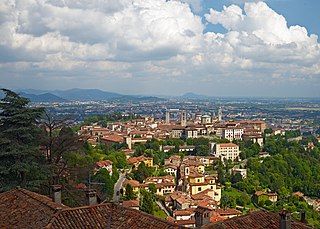
Bergamo is a city in the alpine Lombardy region of northern Italy, approximately 40 km (25 mi) northeast of Milan, and about 30 km (19 mi) from Switzerland, the alpine lakes Como and Iseo and 70 km (43 mi) from Garda and Maggiore. The Bergamo Alps begin immediately north of the city.

Giuseppe Donizetti, also known as Donizetti Pasha, was an Italian musician. From 1828 he was Instructor General of the Imperial Ottoman Music at the court of Sultan Mahmud II (1808–39).
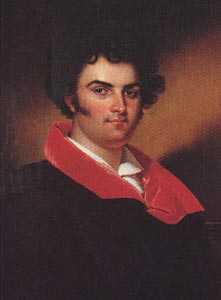
Giovanni Battista Rubini was an Italian tenor, as famous in his time as Enrico Caruso in a later day. His ringing and expressive coloratura dexterity in the highest register of his voice, the tenorino, inspired the writing of operatic roles which today are almost impossible to cast. As a singer Rubini was the major early exponent of the Romantic style of the bel canto era of Vincenzo Bellini and Gaetano Donizetti.
William Ashbrook was an American musicologist, writer, journalist, and academic. He was perhaps best noted as a historian, researcher and popularizer of the works of Italian opera composer Gaetano Donizetti.
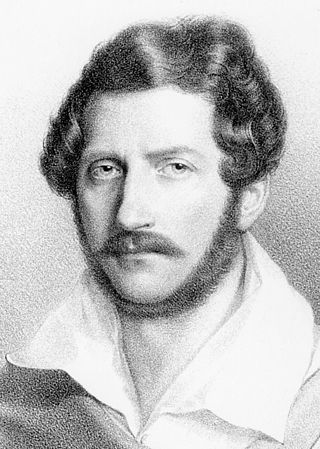
Il campanello or Il campanello di notte is a dramma giocoso, or opera, in one act by Gaetano Donizetti. The composer wrote the Italian libretto after Mathieu-Barthélemy Troin Brunswick and Victor Lhérie's French vaudeville La sonnette de nuit. The premiere took place on 1 June 1836 at the Teatro Nuovo in Naples and was "revived every year over the next decade".

Marino Faliero is a tragedia lirica, or tragic opera, in three acts by Gaetano Donizetti. Giovanni Emanuele Bidera wrote the Italian libretto, with revisions by Agostino Ruffini, after Casimir Delavigne's play. It is inspired by Lord Byron's drama Marino Faliero (1820) and based on the life of Marino Faliero (c.1285-1355), the Venetian Doge.

Betly, ossia La capanna svizzera is a dramma giocoso in two acts by the Italian composer Gaetano Donizetti. The composer wrote the Italian libretto after Eugène Scribe and Mélésville's libretto for Adolphe Adam's opéra comique Le chalet, in its turn based on Goethe's Singspiel Jery und Bätely (1779).

Il Pigmalione (Pygmalion) is a scena lirica in one act by Gaetano Donizetti. The librettist is unknown, but it is known that the libretto was based on one by Antonio Simeone Sografi for Giovanni Battista Cimador's Pimmalione (1790), in turn based on Jean-Jacques Rousseau's Pygmalion and ultimately based on Book X of Ovid's Metamorphoses. Sografi's libretto was also used for an opera by Bonifacio Asioli (1796).

The Basilica of Santa Maria Maggiore is a major church in the upper town of Bergamo, Northern Italy.

Matteo Salvi was a composer of opera and classical music and a theatre director.

Clorinda Corradi was an Italian opera singer and one of the most famous contraltos in history.

The Teatro Donizetti is an opera house in Bergamo, Italy. Built in the 1780s using a design by architect Giovanni Francesco Lucchini, the theatre was originally referred to as either the Teatro Nuovo or Teatro di Fiera. The first opera to be mounted at the theatre, Giuseppe Sarti's Medonte, re di Epiro, was in 1784 while the opera house was still under construction. The official opening of the house, under the name the Teatro Riccardi, did not occur until 24 August 1791 with a production of Pietro Metastasio's Didone abbandonata set to music by multiple composers, including Ferdinando Bertoni, Giacomo Rampini, Johann Gottlieb Naumann, Giuseppe Gazzaniga, and Giovanni Paisiello.

Don Gregorio is an 1826 opera by Gaetano Donizetti from a libretto by Jacopo Ferretti and adapted from his popular 1824 opera buffa L'ajo nell'imbarazzo, which had enjoyed considerable success when presented at the Teatro Valle in Rome on 4 February 1824.
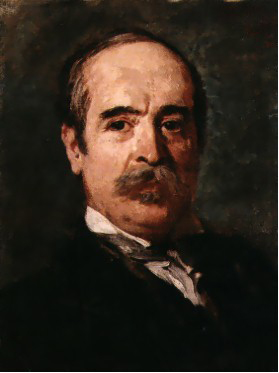
Francesco Jerace was an Italian sculptor.
The following is a timeline of the history of the city of Bergamo in the Lombardy region of Italy.

Donizetti's birthplace is a cultural site in Bergamo, in Lombardy, Italy. The composer Gaetano Donizetti was born here on 29 November 1797; since 2009 it has been a museum.
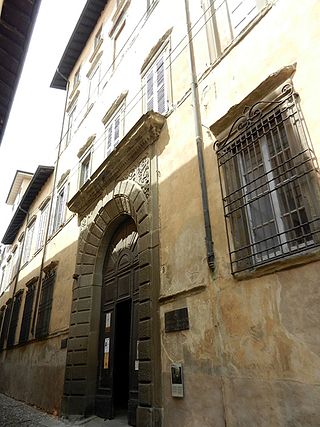
The Donizetti Museum is a cultural site in Bergamo, in Lombardy, Italy. It is dedicated to the composer Gaetano Donizetti (1797–1848), who was born in the city.

The Monumento al Partigiano or Monument to the Partisan is a bronze monument places in Piazza Matteoti corner with Viale Papa Giovanni XXIII in the lower town of Bergamo, region of Lombardy, Italy. The monument by Giacomo Manzu commemorates the deaths of partisans killed by fascist forces during the World War II. The monument is in the same park, in a spot just northeast of the monument of Vittorio Emanuele II, and across the viale from the Teatro Donizetti.
















